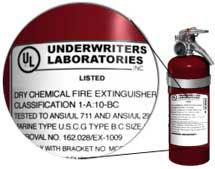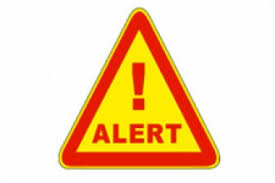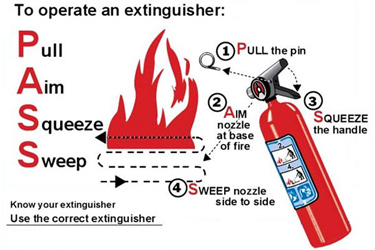Electrical Hazard Awareness
What does hazard mean?
- Any potential or actual threat to the well-being of people, machinery or environment.
Electrical hazard means?
- Taking precautions to identify and control electrical hazards.

What are the safety priorities?
Electrical hazards exist in almost every workplace. Common causes of electrocution are:
- Making contact with exposed wires
- Undertaking maintenance on live equipment
- Working with damaged electrical equipment, such as extension leads, plugs and sockets
- Usinf equipment affected by rain or water ingress
If you come across a person receiving an electric shock:
How do you respond to electrical incidents?
If you come across a person receiving an electric shock:
- If possible, disconnect the electrical supply (switch?)
- Assess the situation – never put yourself at risk
- Take precautions to protect yourself and anyone else in the vicinity
- Apply first aid principles (DRSABCD)
- Assess the injuries and move the casualty to a safe area if required
- Administer first aid if trained
- Seek urgent medical attention

What are the levels of effect of current?

How can electrical-related accidents be avoided?
- Always plug high-wattage equipment on power strips (e.g. computers, laptops, routers, printers, etc)
- Low-wattage equipment/appliance should be plugged to the wall sockets (e.g. fan, phone chargers, etc.)
- Even when using a surge protector, make sure the electrical load is not too much for the circuit.
- Avoid overloading outlets with too many appliances.
- Inspect electrical cords twice a month to ensure they are not frayed, cracked or otherwise damaged.
- Do not run electrical cords through high-traffic areas, across the walkways or across parallel desks.
- Consider having a licensed electrician install additional outlets where needed,rather than relying on extension cords and power strips.
- Ensure all electrical equipment is certified by nationally recognized laboratory and read all manufacturer’s instructions carefully.
- Provide all employees with information and training on electrical safety and the correct use of electrical equipment .
- Ensure that all electrical equipment has gone through necessary checks before being brought onto the premises.
What should you do in an electrical emergency?
For low voltage electricity >50v AC and 100v DC
- remove the source of electricity supply
- commence CPR if trained
- call the emergency number on site
For high voltage electricity >1000v- call the emergency number on site
- do not go near the casualty
- do not touch the casualty or try to free them with anything
Fire Safety
Workplace fires and explosions kill hundreds and injure thousands of workers each year costing businesses millions of dollars. Being prepared for a fire emergency can help to save lives and limit losses to property. A fire is the most common type of emergency for which small businesses must plan. A quick decision must be made by the employee whether they will evacuate or whether they will remain and fight the fire. A well-trained employee with a fire extinguisher can be a very effective tool in putting out small fires quickly.
To safely put out fires, employees must understand the uses and limitations of portable fire extinguishers along with the hazards associated with fighting a fire. Evacuation plans that designate or require some or all of the employees to fight fires with portable fire extinguishers increase the level of complexity of the plan and the level of training that must be provided to employees.
Fire extinguisher types:
- Air pressurized water: This type of fire extinguisher is generally used on Class A fires.
- Carbon Dioxide (CO2): This type of extinguisher is used on Class B and C fires, but may be used on Class A fires in instances where water damage needs to be avoided.
- Dry Chemical: This type of extinguisher is usually used for Class B and Class C fires.
- Halon: This type of extinguisher is used on Class A, B and C fires to protect valuable electrical equipment.

On the label in the above picture the extinguisher is classified as 1-A:10-BC. The letters (A, B, and C) represent the classes of fire for which the extinguisher is approved. The number in front of an A rating indicates how much water the extinguisher is equal to and represents 1.25 gallons of water for every unit. For example, a 4-A rated extinguisher would be equal to five (4 x 1.25) gallons of water.
The number in front of the BC rating represents the area in square feet of a class B or C fire that a non-expert user should be able to extinguish. Using the above example, a non-expert user should be able to put out a flammable liquid or electrical fire that is as large as 10 square feet.

- Never use water to extinguish flammable liquid fires. Water is extremely ineffective at extinguishing this type of fire and may make matters worse by the spreading the fire.
- Never use water to extinguish an electrical fire. Water is a good conductor and may lead to electrocution if used to extinguish an electrical fire. Electrical equipment must be unplugged and/or de-energized before using a water extinguisher on an electrical fire.
The following steps should be followed when responding to an early stage fire:
- Sound the fire alarm and call the fire department, if appropriate.
- Identify a safe evacuation path before approaching the fire. Do not allow the fire, heat, or smoke to come between you and your evacuation path.
- Select the appropriate type of fire extinguisher.
- Discharge the extinguisher within its effective range using the P.A.S.S. technique (pull, aim, squeeze, and sweep).
- Back away from an extinguished fire in case it flames up.
- Evacuate immediately if the extinguisher is empty and the fire is not out.
- Evacuate immediately if the fire progresses beyond the incipient stage.
Fire Safety
- PULL — Pull the pin. This will also break the tamper seal.
- AIM — Aim low, pointing the extinguisher nozzle (or its horn or hose) at the base of the fire. Do not touch the plastic discharge horn on CO2 extinguishers, it gets very cold and may damage skin.
- SQUEEZE — Squeeze the handle to release the extinguishing agent.
- SWEEP — Sweep from side to side at the base of the fire until it appears to be out. Watch the area. If the fire re-ignites, repeat steps 2 – 4.

Evacuation
Employees should be aware of all escape routes and are responsible for practicing safe evacuations. If safety is compromised due to a fire, employees should evacuate the building. It is important to check closed doors for heat before opening them. If escaping through a closed door, the back of the hand may be used to feel the top of the door, the doorknob, and the crack between the door and door frame before opening. Do not use the palm of the hand or fingers to test for heat (burning those areas could impair the ability to escape a fire).
If a door is hot it should not be opened and an alternate route should be located. It may become necessary to escape through a window. If it is not possible to escape through a window a white or light-colored cloth or material should be hung outside the window, alerting fire fighters to the fact that someone is still inside the building.
If a door is cool it may be opened slowly to ensure that fire and/or smoke is not blocking the escape route. If the escape route is blocked, the door should be shut immediately and an alternate escape route, such as a window should be used. If, however, the route is clear, escape should be made immediately with the door being closed behind the last person. It may be necessary to crawl through the area to make an escape. Smoke and heat rise with heavy smoke and poisonous gas collecting first along the ceiling. The air is clearer, cooler, and safer near the floor.
Doors should be closed as they are passed through to delay the spread of the fire. Once out of the building, everybody should stay safely out and meet at the designated meeting location.